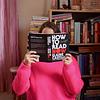You need to sign in or sign up before continuing.
Take a photo of a barcode or cover

savvylit 's review for:
How Nonviolence Protects the State
by Peter Gelderloos
informative
reflective
medium-paced
Have you ever been to a protest or march where they discuss peace policing? As in, don't enforce the idea of peaceful protest as "correct" to your fellow attendees? Or have you ever seen discourse online around mass movements where commentators suggest that an oppressed group brought violence upon themselves by acting in violent defense? If either of those things reflect your experience, then you may be interested in reading How Nonviolence Protects the State.
This book begins by looking at historical protest movements and the ways they've been peace-washed by history. For instance, Gelderloos cites the American Civil Rights movement and how so many of its victories were achieved via the threat of violence. Said "violent" tactics were even endorsed by Martin Luther King Jr. (who is often held up by US history as a nonviolent idol).
Gelderloos also does an excellent job elucidating the ways in which peace is a privileged choice. In an effort to avoid character limits, I'll leave you with this quote about privilege that has been rattling around in my brain since I finished reading: "Nonviolence is an inherently privileged position in the modern context. Besides the fact that the typical pacifist is quite clearly white and middle class, pacifism as an ideology comes from a privileged context. It ignores that violence is already here; that violence is an unavoidable, structurally integral part of the current social hierarchy; and that it is people of color who are most affected by that violence. Pacifism assumes that white people who grew up in the suburbs with all their basic needs met can counsel oppressed people, many of whom are people of color, to suffer patiently under an inconceivably greater violence, until such time as the Great White Father is swayed by the movement’s demands or the pacifists achieve that legendary 'critical mass.'"
This book begins by looking at historical protest movements and the ways they've been peace-washed by history. For instance, Gelderloos cites the American Civil Rights movement and how so many of its victories were achieved via the threat of violence. Said "violent" tactics were even endorsed by Martin Luther King Jr. (who is often held up by US history as a nonviolent idol).
Gelderloos also does an excellent job elucidating the ways in which peace is a privileged choice. In an effort to avoid character limits, I'll leave you with this quote about privilege that has been rattling around in my brain since I finished reading: "Nonviolence is an inherently privileged position in the modern context. Besides the fact that the typical pacifist is quite clearly white and middle class, pacifism as an ideology comes from a privileged context. It ignores that violence is already here; that violence is an unavoidable, structurally integral part of the current social hierarchy; and that it is people of color who are most affected by that violence. Pacifism assumes that white people who grew up in the suburbs with all their basic needs met can counsel oppressed people, many of whom are people of color, to suffer patiently under an inconceivably greater violence, until such time as the Great White Father is swayed by the movement’s demands or the pacifists achieve that legendary 'critical mass.'"
Graphic: Genocide, Gun violence, Hate crime, Violence, Murder